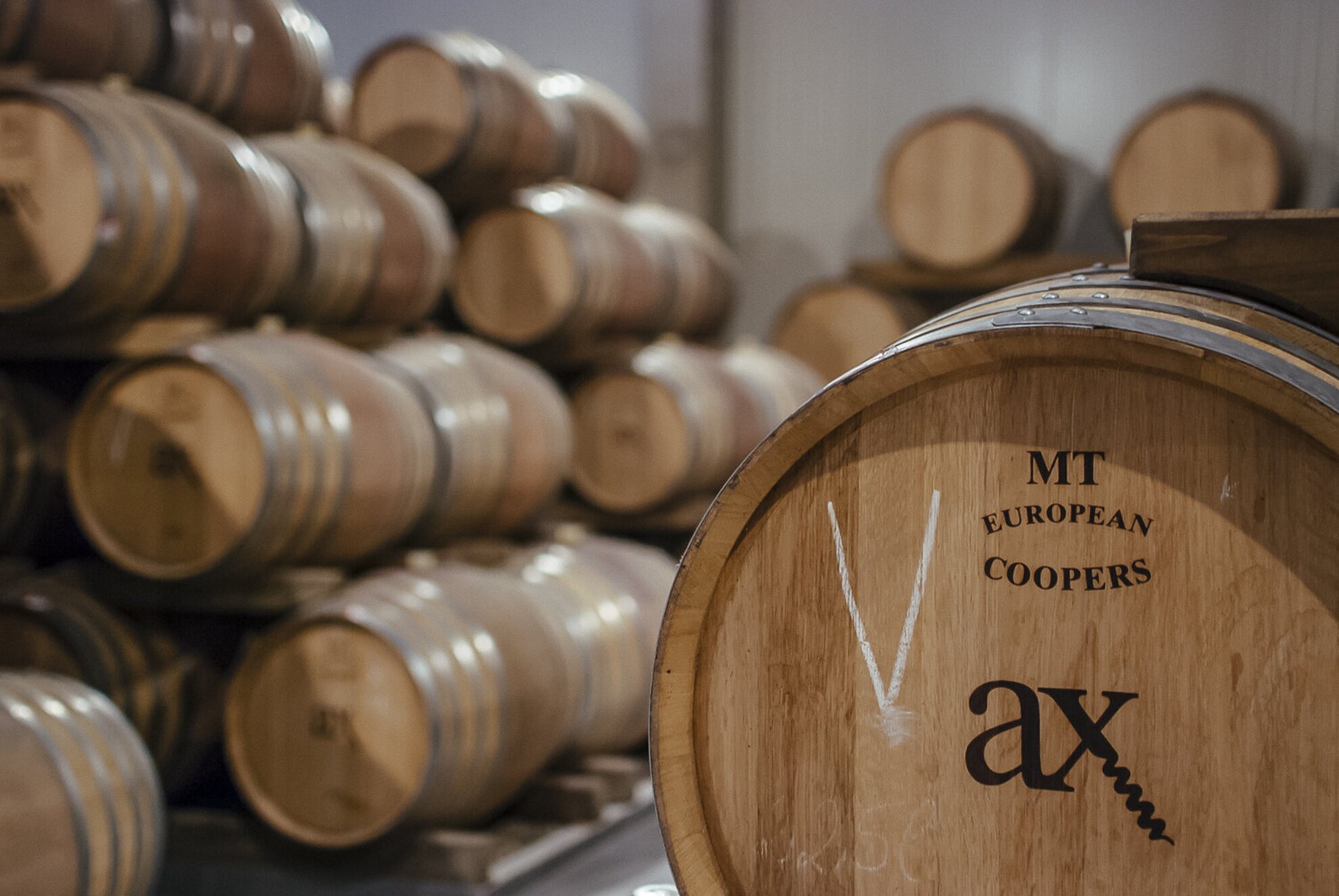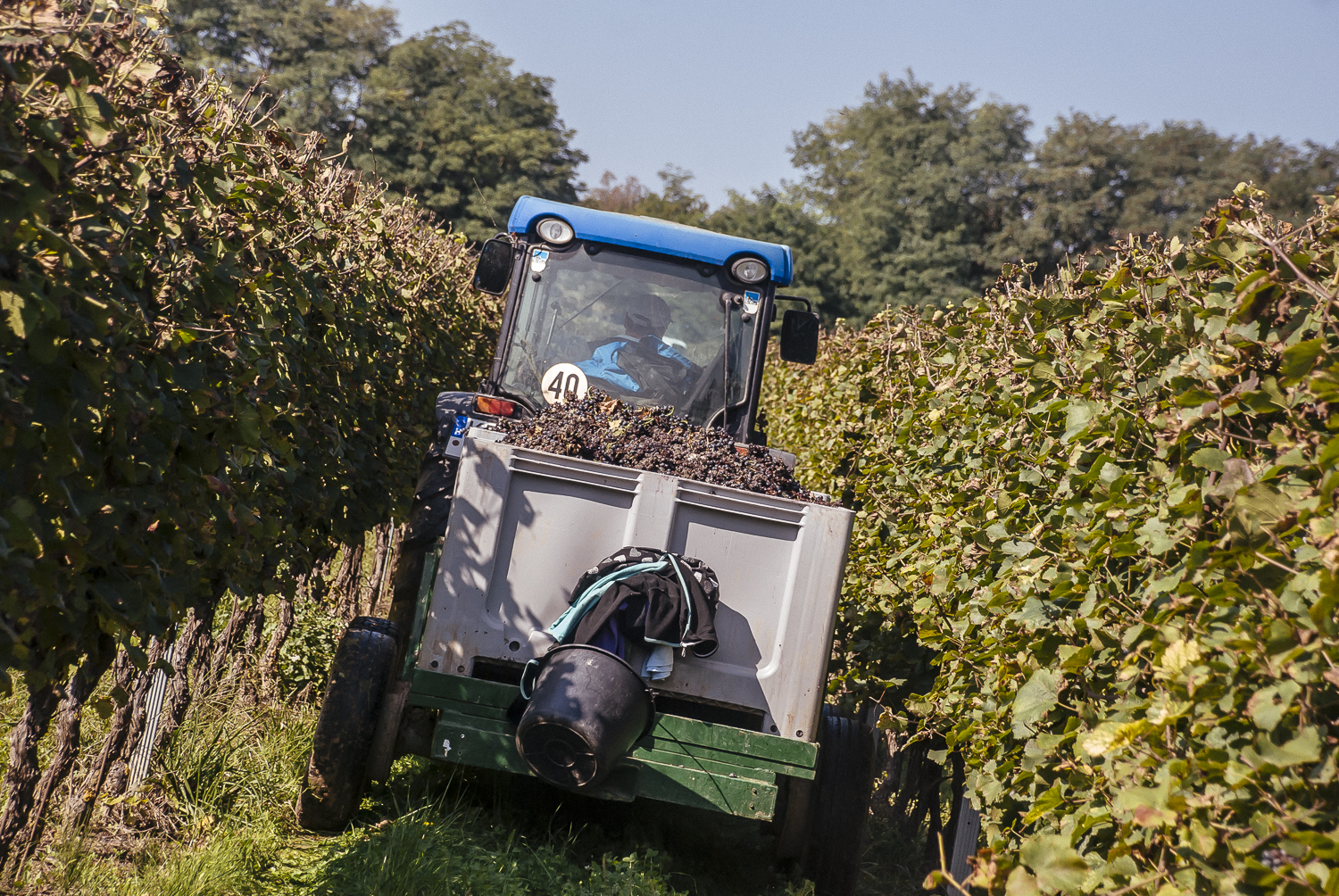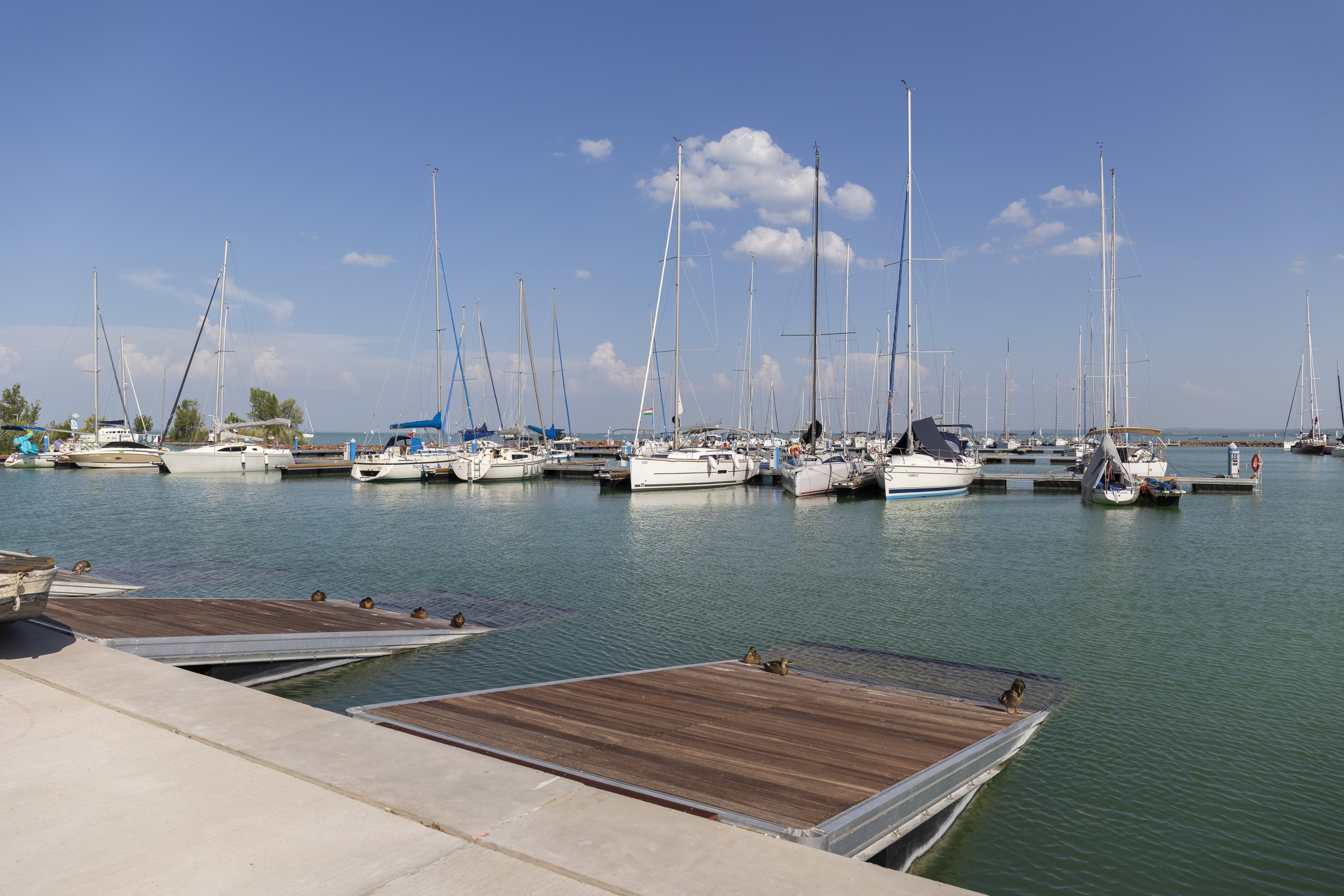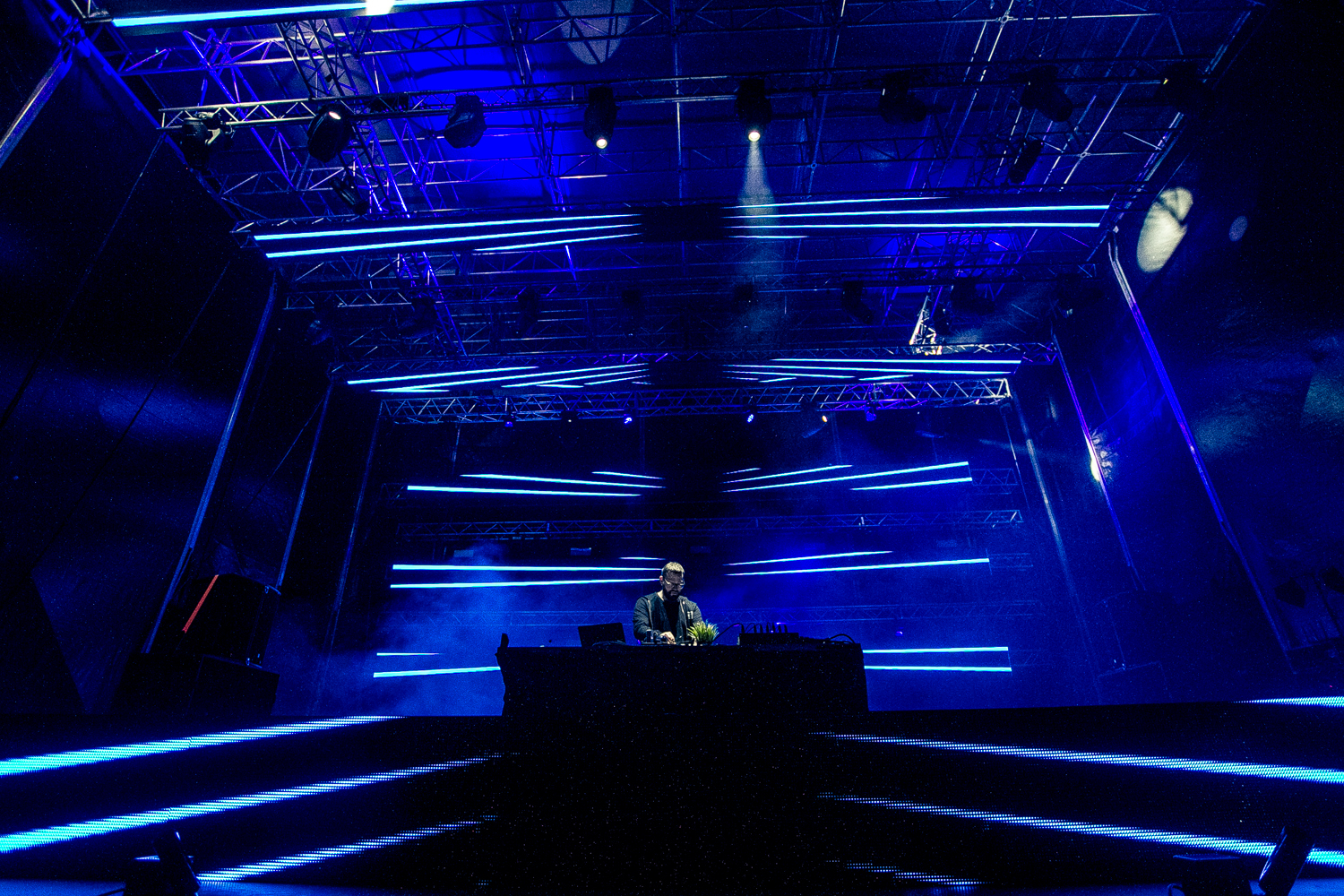Last year, we already wrote about the Ax&Ax Winery, who burst onto the Hungarian market and into Kéthely with their 142 000 HUF top wine, K11, and a hyper-modern complex that boasts of a movie room, a tapas bar and a black box event venue.
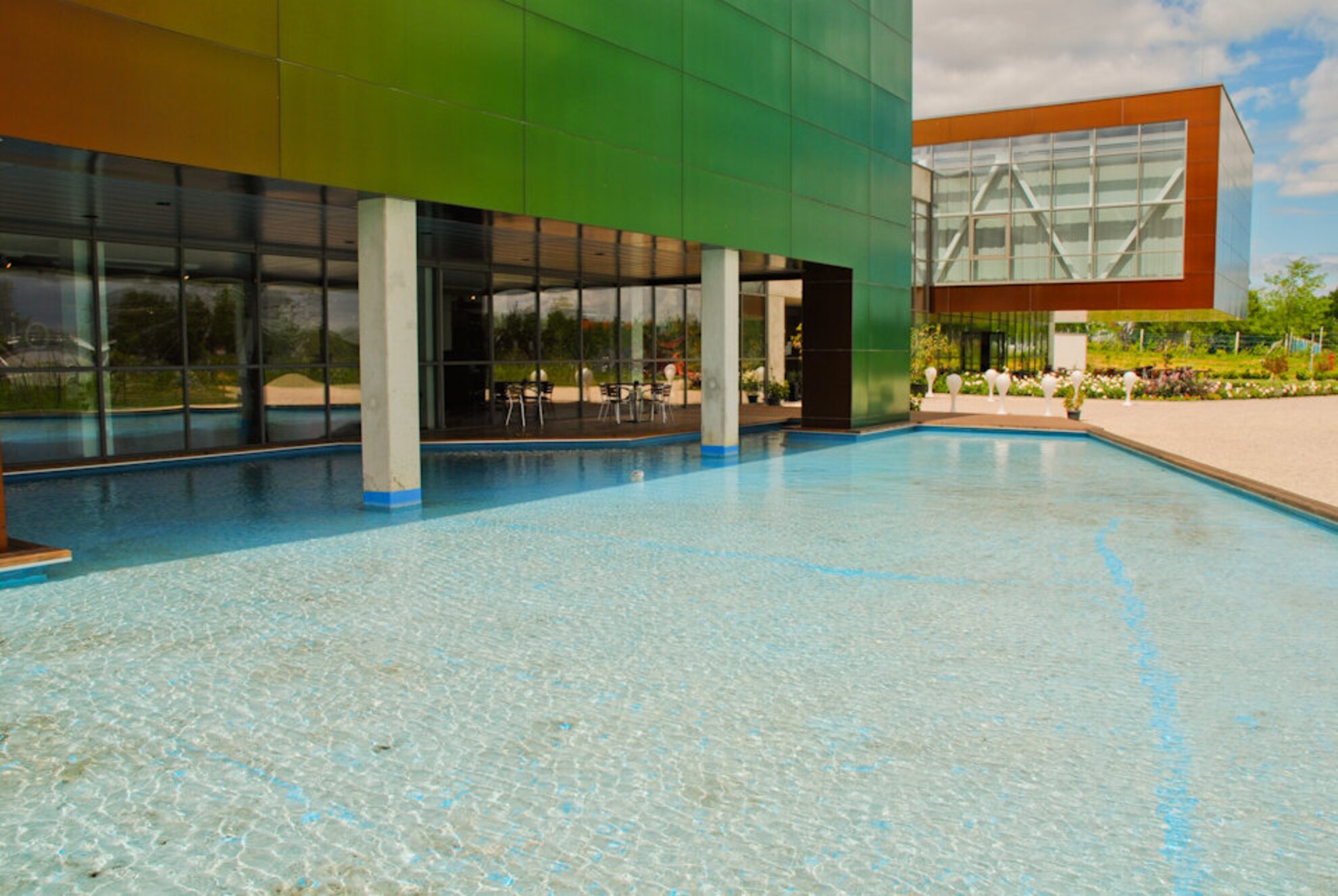
A year has passed since, and the Austrian-owned winery has grown strong roots by the Balaton. One of the owners, Hans Georg Achs believes that the wines of the Balaton region could easily measure up to the best of Europe. The grandpa (in tribute to whom they make a red and a white cuvée every year) studied oenology at the Keszthely university of agriculture and experimented with his first wines in the cellar of the family home in Kéthely. His grandchild, who was born in Austria, returned to Kéthely with far greater ambitions. The Ax&Ax Winery works with 10 grape varieties on 55 acres today. Beside their standard wines, they also deal in middle and top category wines as well.
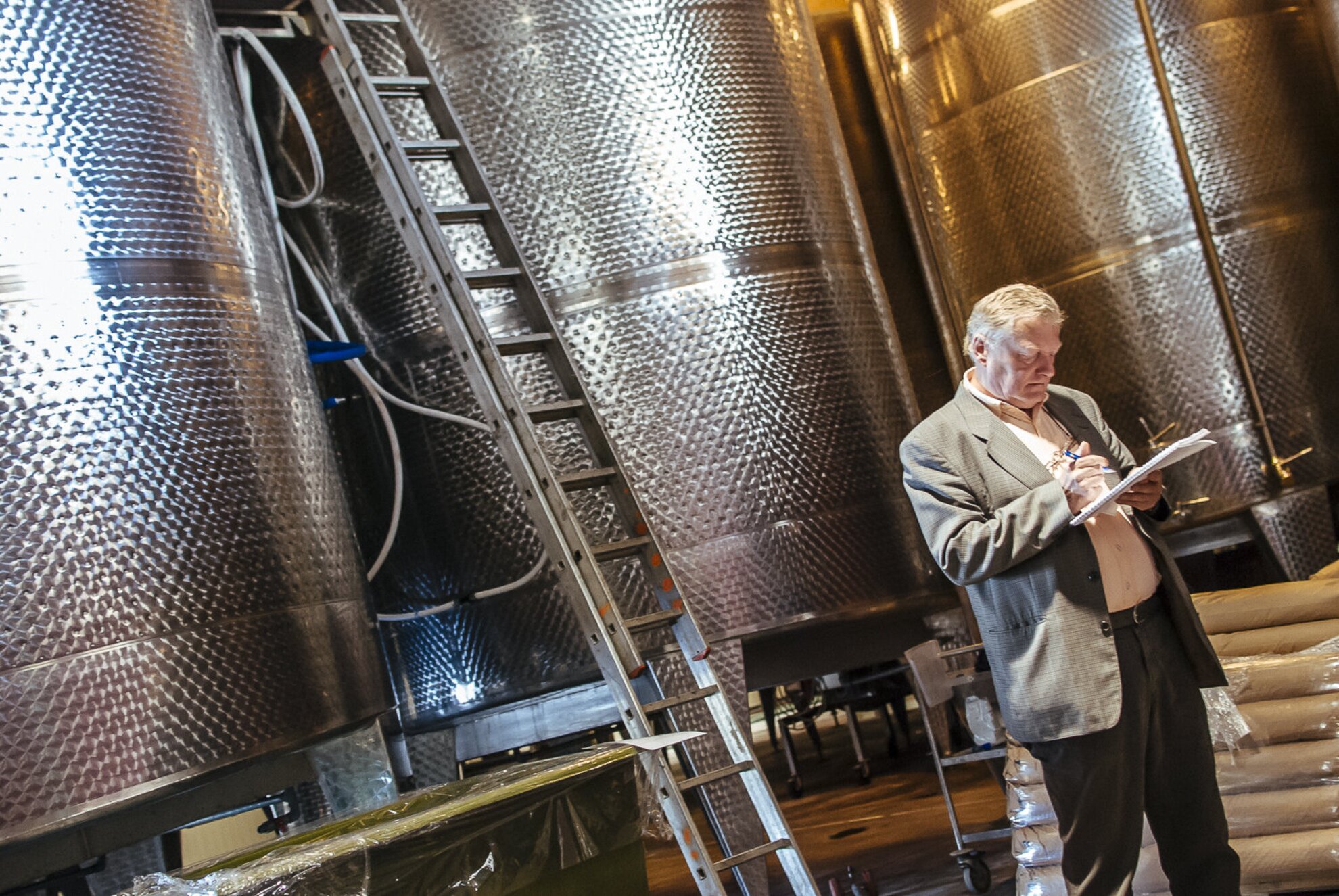
At the moment, they mostly produce for export, but they wish to increase their Hungarian sales in the future. In the following photos, we would like to show you the journey of the grapes to the Ax&Ax bottles.
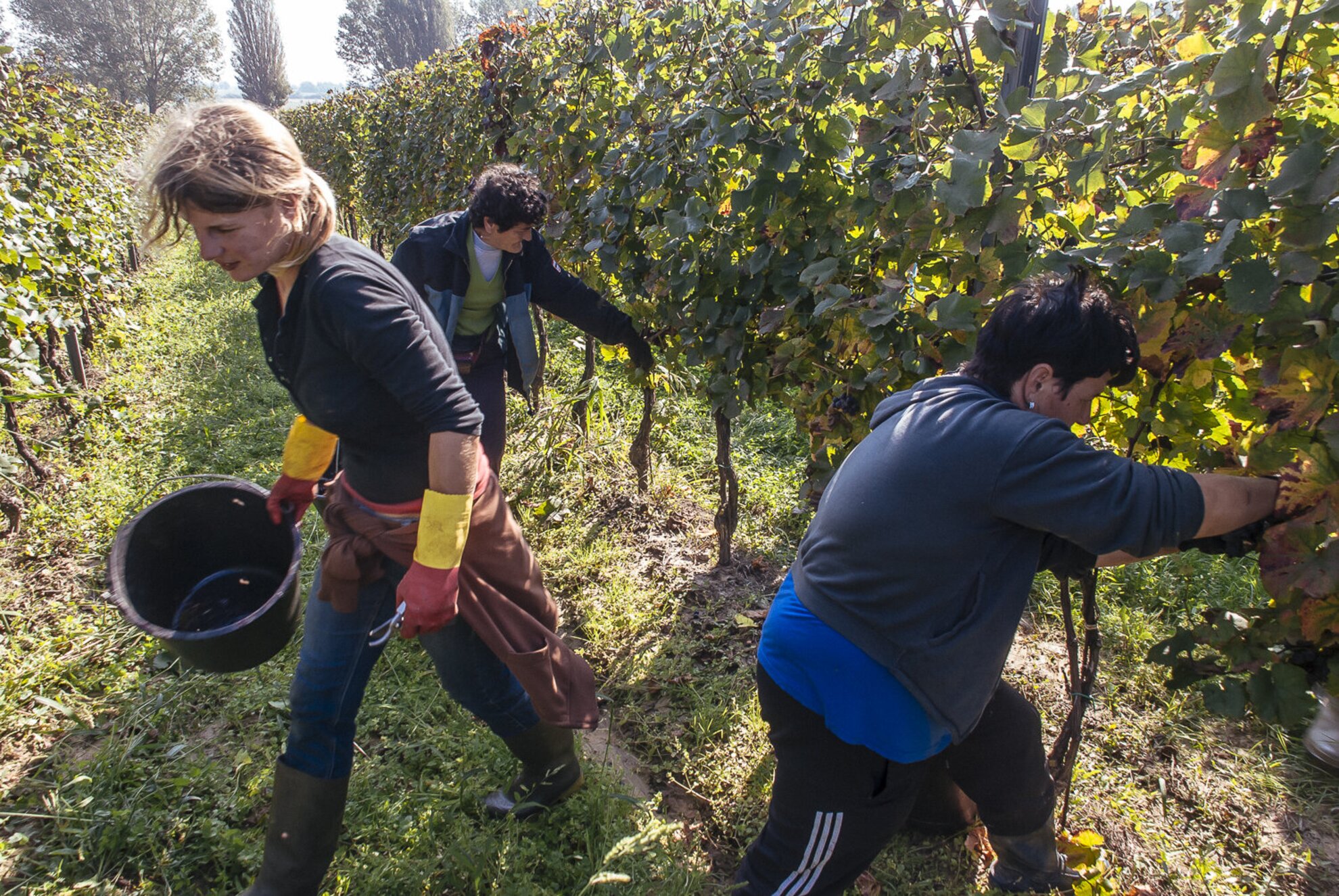
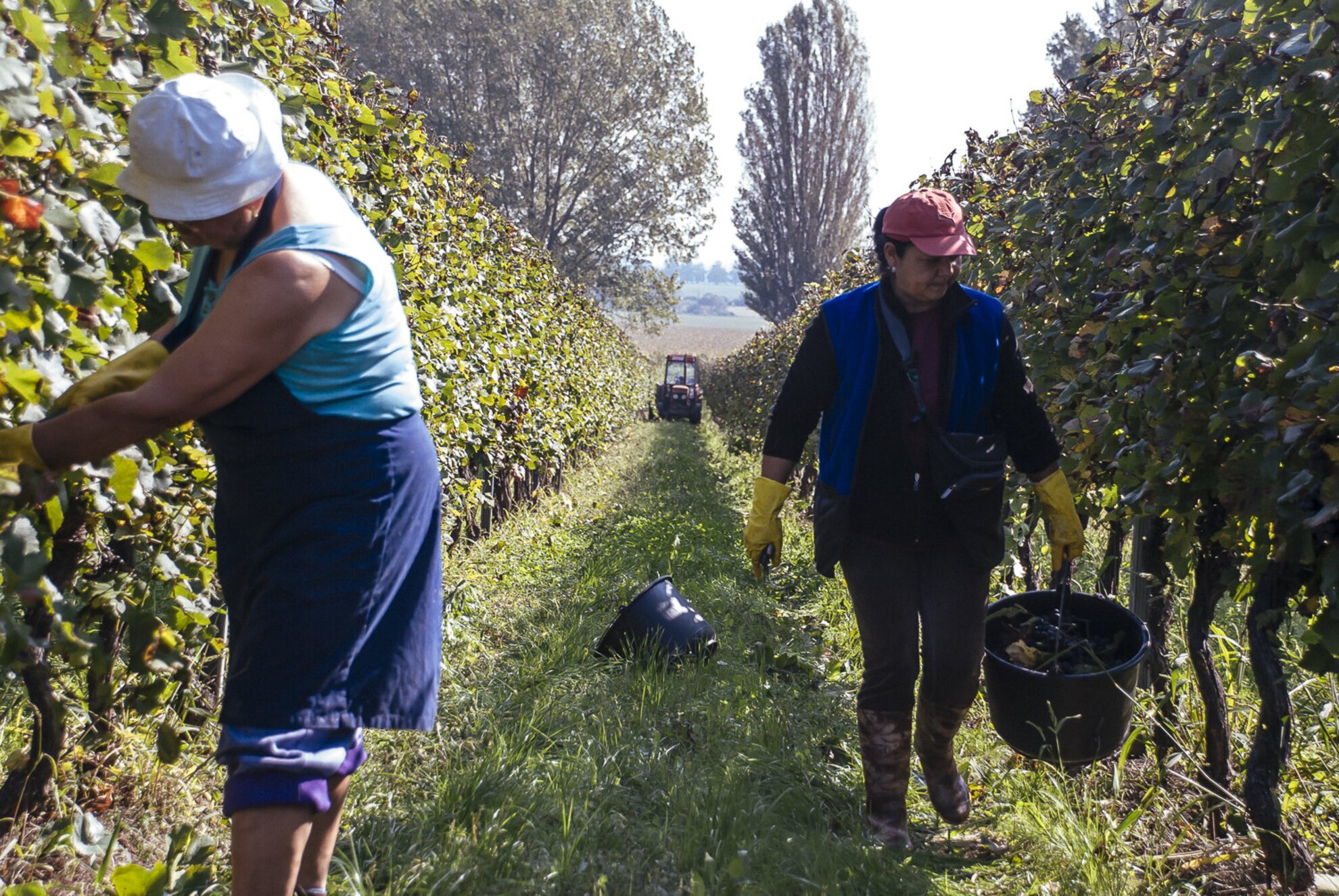
The day starts at 7 AM among the grape rows. Grapes are picked exclusively by hand at the Ax&Ax vineyard, so they wouldn't be crushed. They always proceed from bottom to top with the buckets.
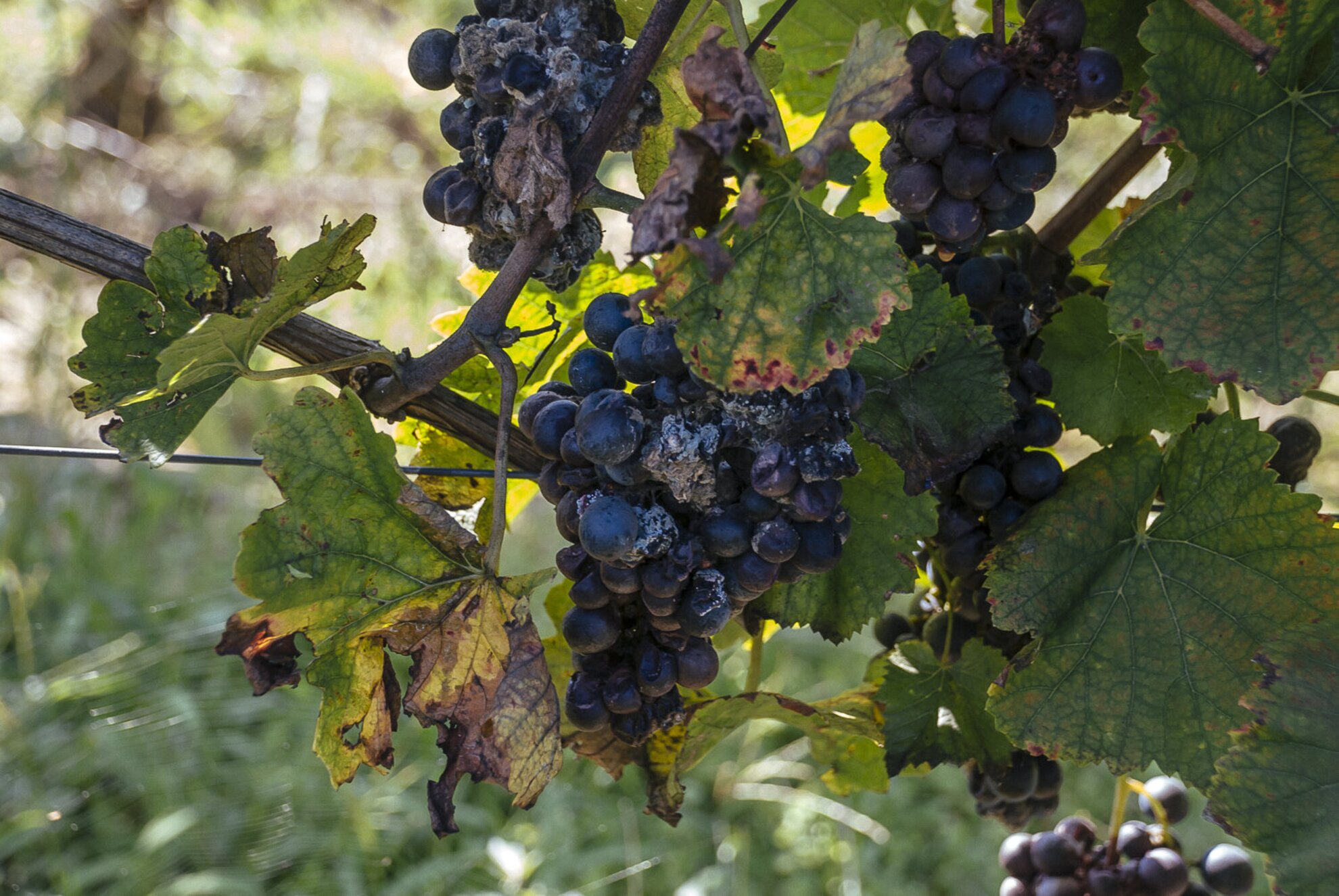
As opposed to the customary 16 buds, the Ax&Ax leaves only 8-10 on each shoot, so the plant won't be overburdened and it could bear quality yield. The winery works with 10 grape varieties; in addition to the varieties characteristic of the Balaton region, they also grow Tramini and Green Veltliner.
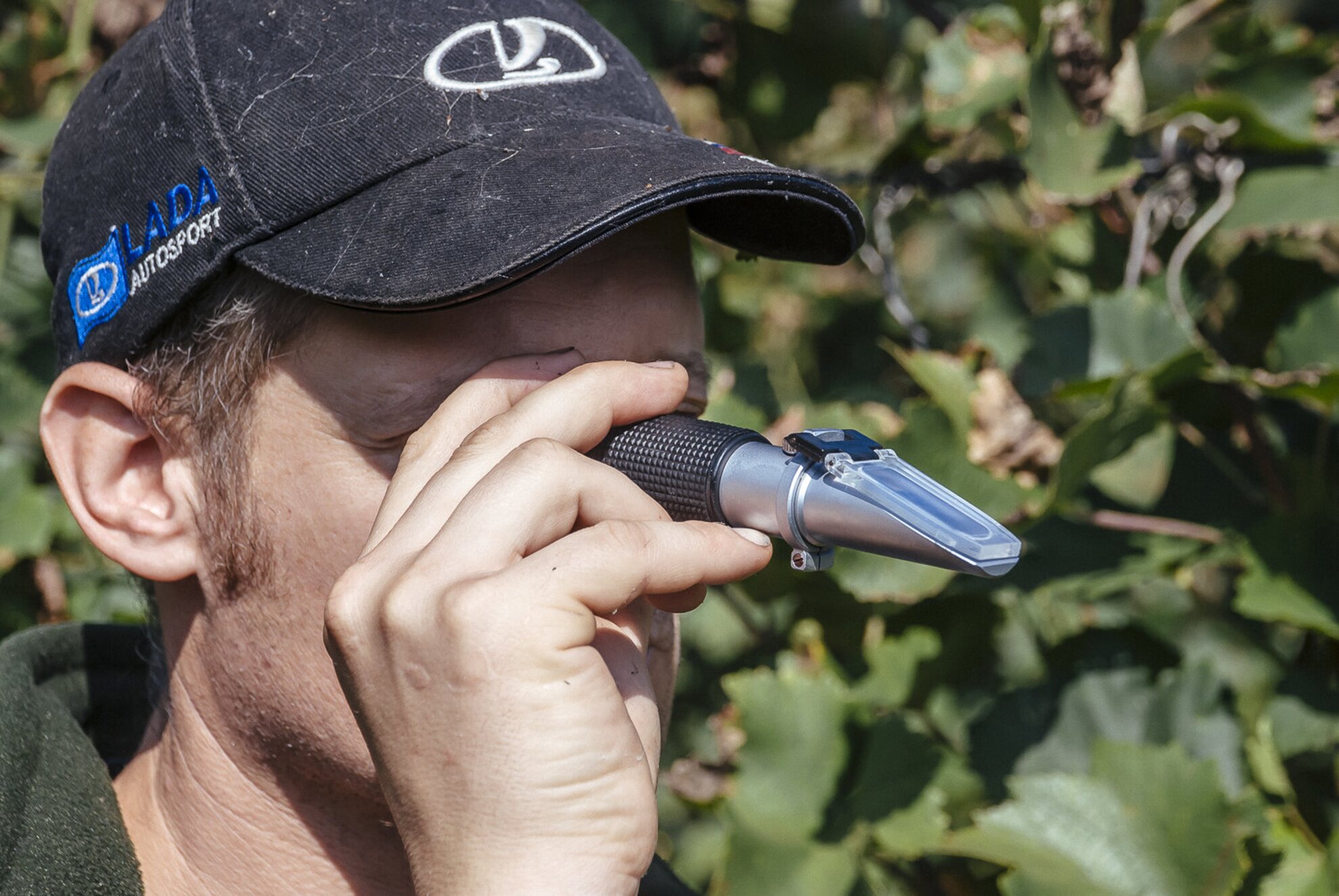
During the harvest, the cellar master Tamás Sziva checks the sugar content of the grapes with refractometer that looks just like a high-tech telescope. It is embarrassingly simple to use: he drips a few drops of grape juice onto a small glass plate and holds it up towards the sun. On the other side, the scale immediately shows the exact sugar content of the grape.
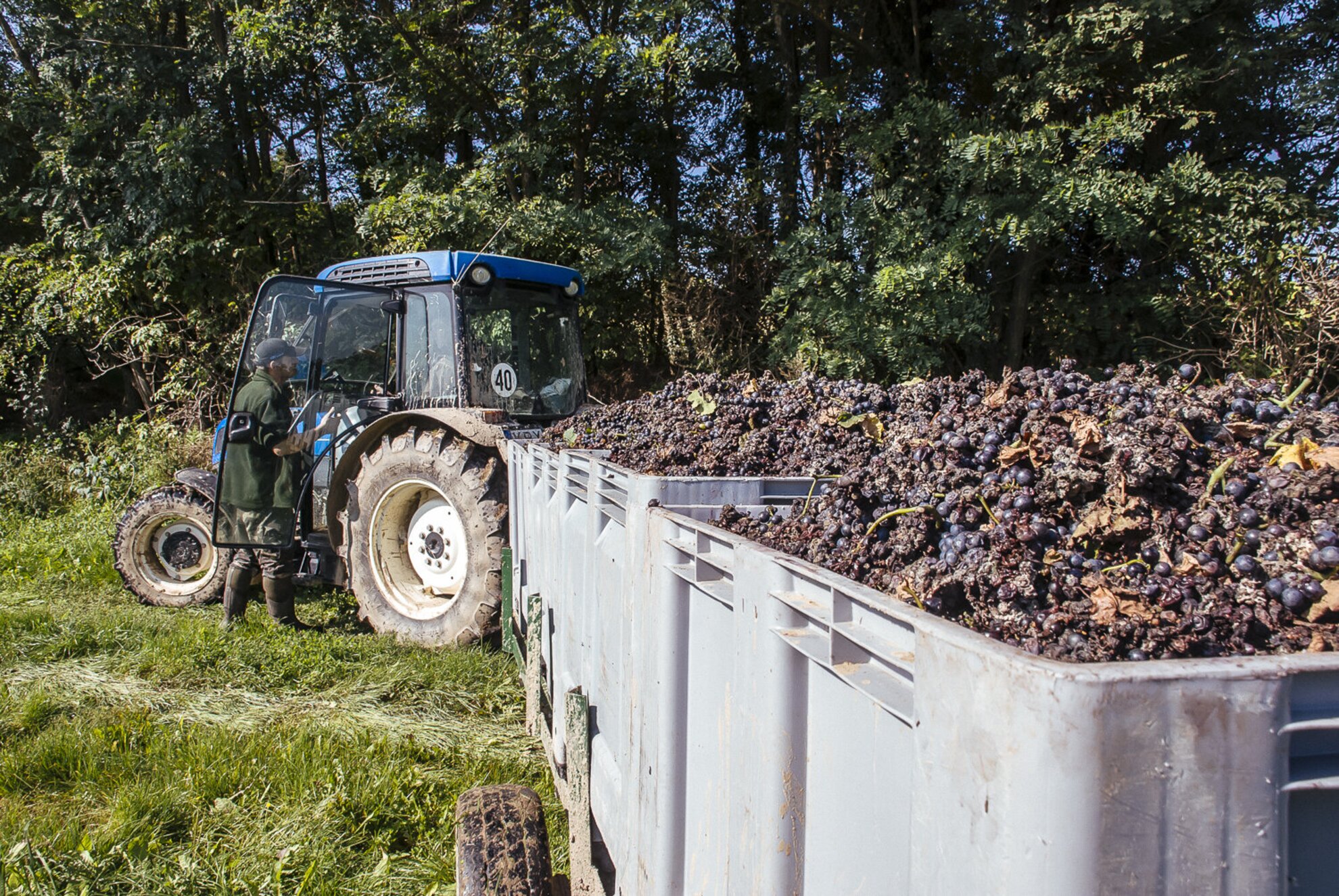
At the processing plant, the first step is the sulphuring of the grapes, which keeps fruit-flies away, disinfects the grapes and prepares them for processing. At this point, the processing method for the basic wines separates from that of the middle- and top category wines.
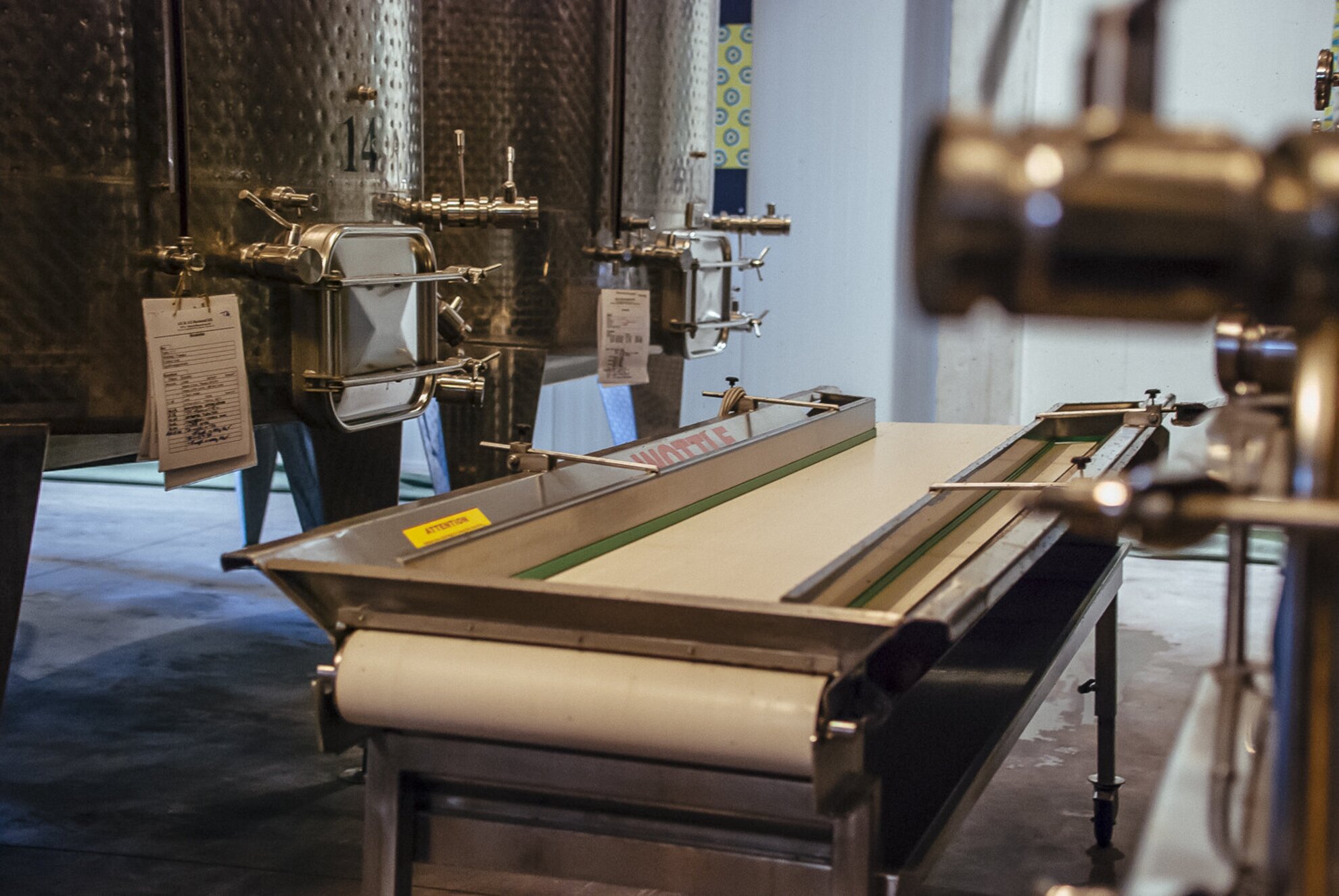
The bunches intended for middle and top category wines are transferred to a selection line, where the grapes are de-stemmed one by one by manual labour in order to reduce the possibility of damage. After the careful sorting, the processing of the quality grapes can begin.
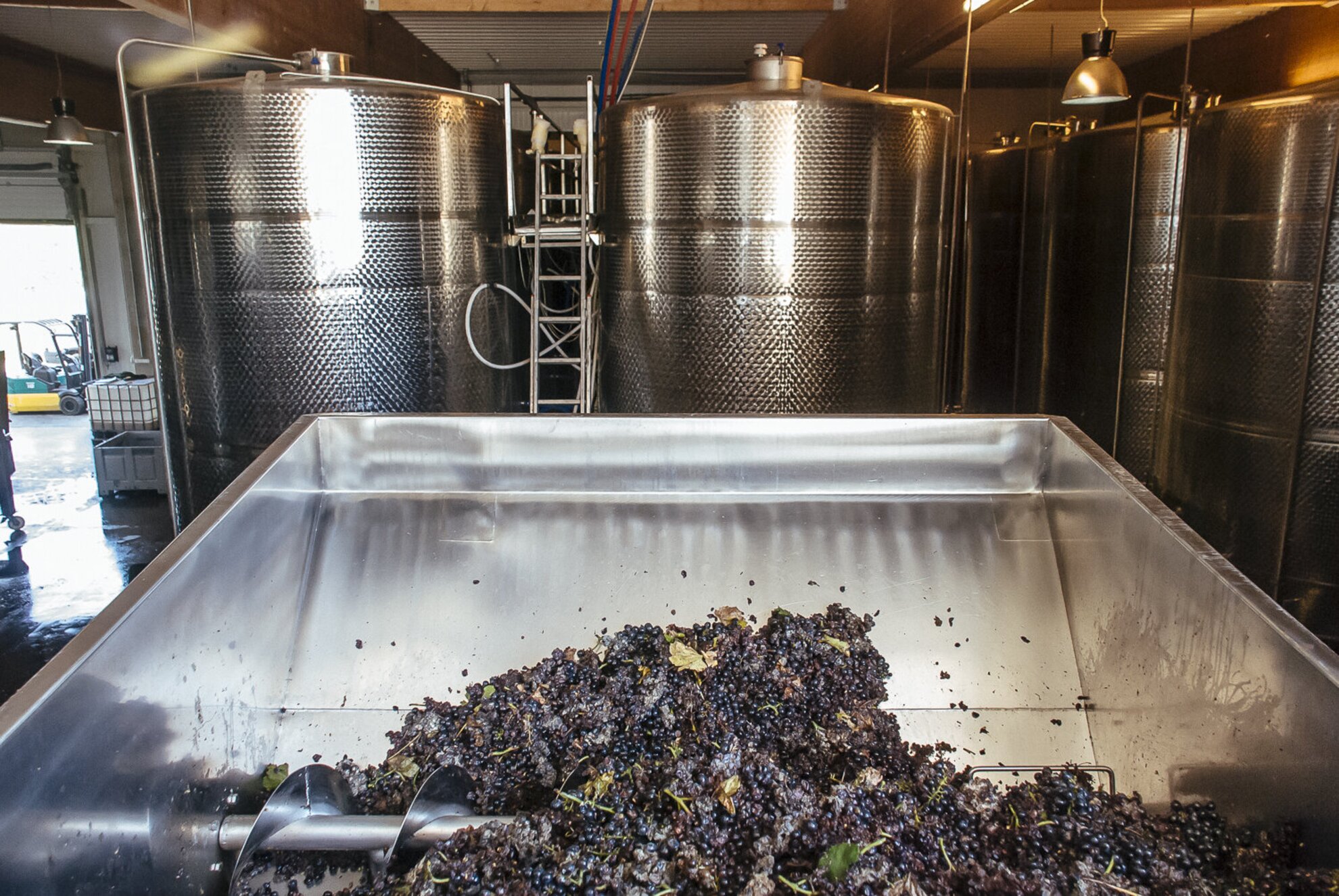
The bunches of grapes for the basic wines are not pre-sorted. They are poured into the stainless steel hopper from above. Inside, a pulley system performs the de-stemming. Below, two adjustable roll crushers crushes the grapes. In case of red grapes, the rolls are opened wider, so the grapes would stay more or less in one piece, thus the colour of the juice in the press will be more intense red, tinted by the skin.
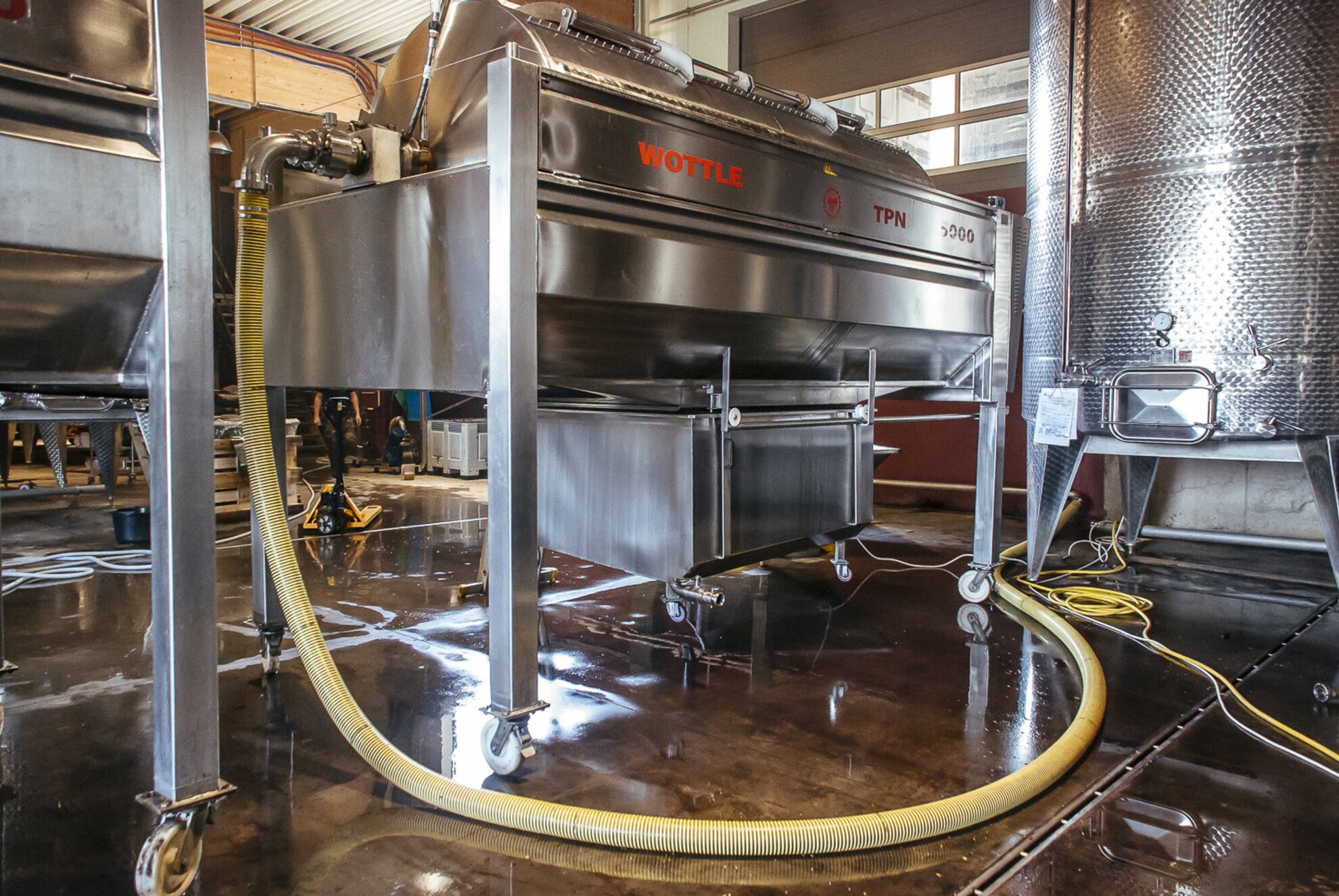
After the hopper and the roll crushers, the rough juice is pumped into this monstrous piece of equipment, the press. By this time, the stems and the seeds are already eliminated from the process. The press uses air pressure to press the juice from the grapes, which is then put into the tanks.
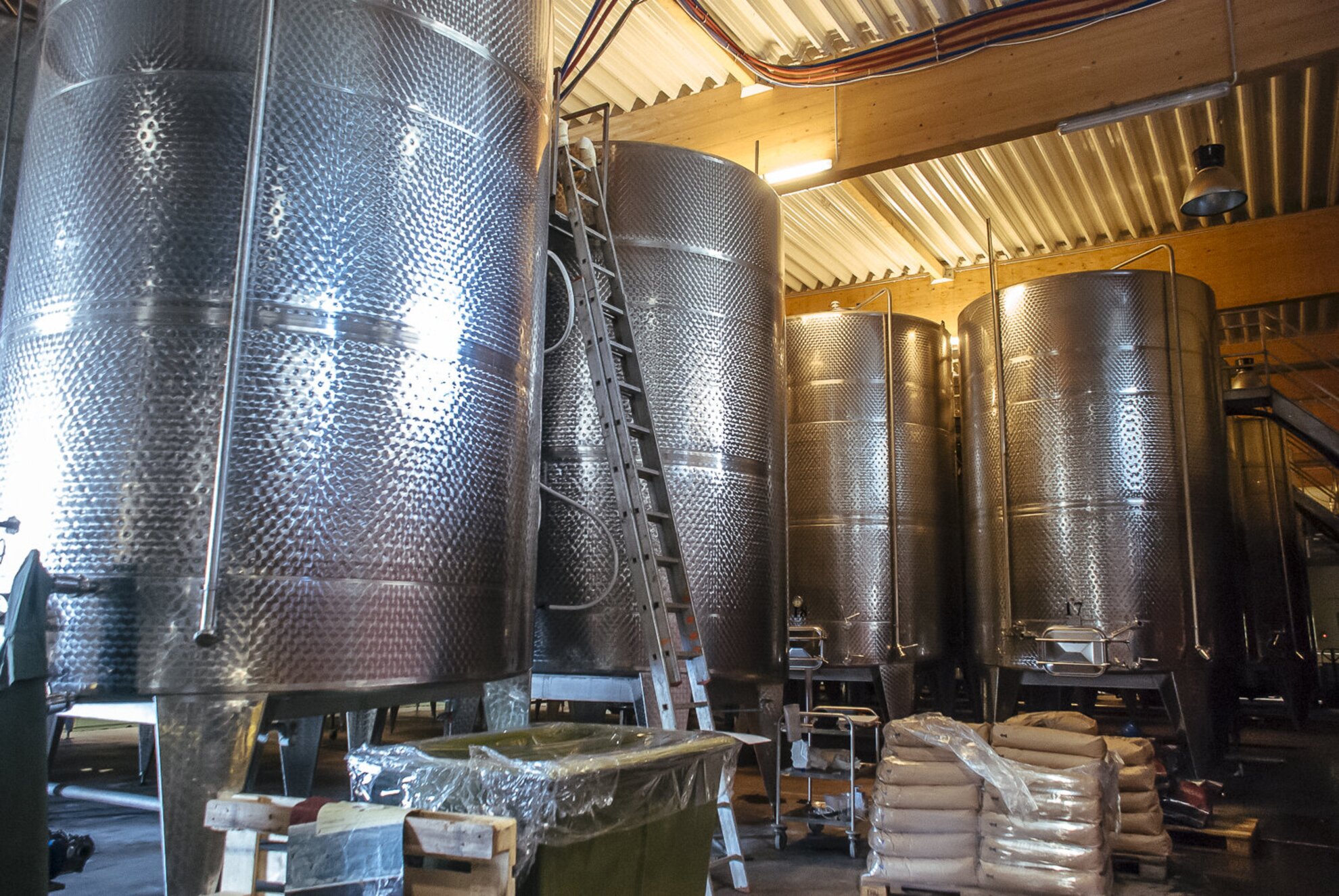
The real sorcery begins with these gigantic tanks. The grape juice is poured on the lees, it is filtered several times and additives are added. The wines travel from tank to tank, and go through a final fine filtering before the bottling. The fermentation of red wines takes 3 to 4 weeks, while the white wines are ready for bottling in 1-1.5 weeks.
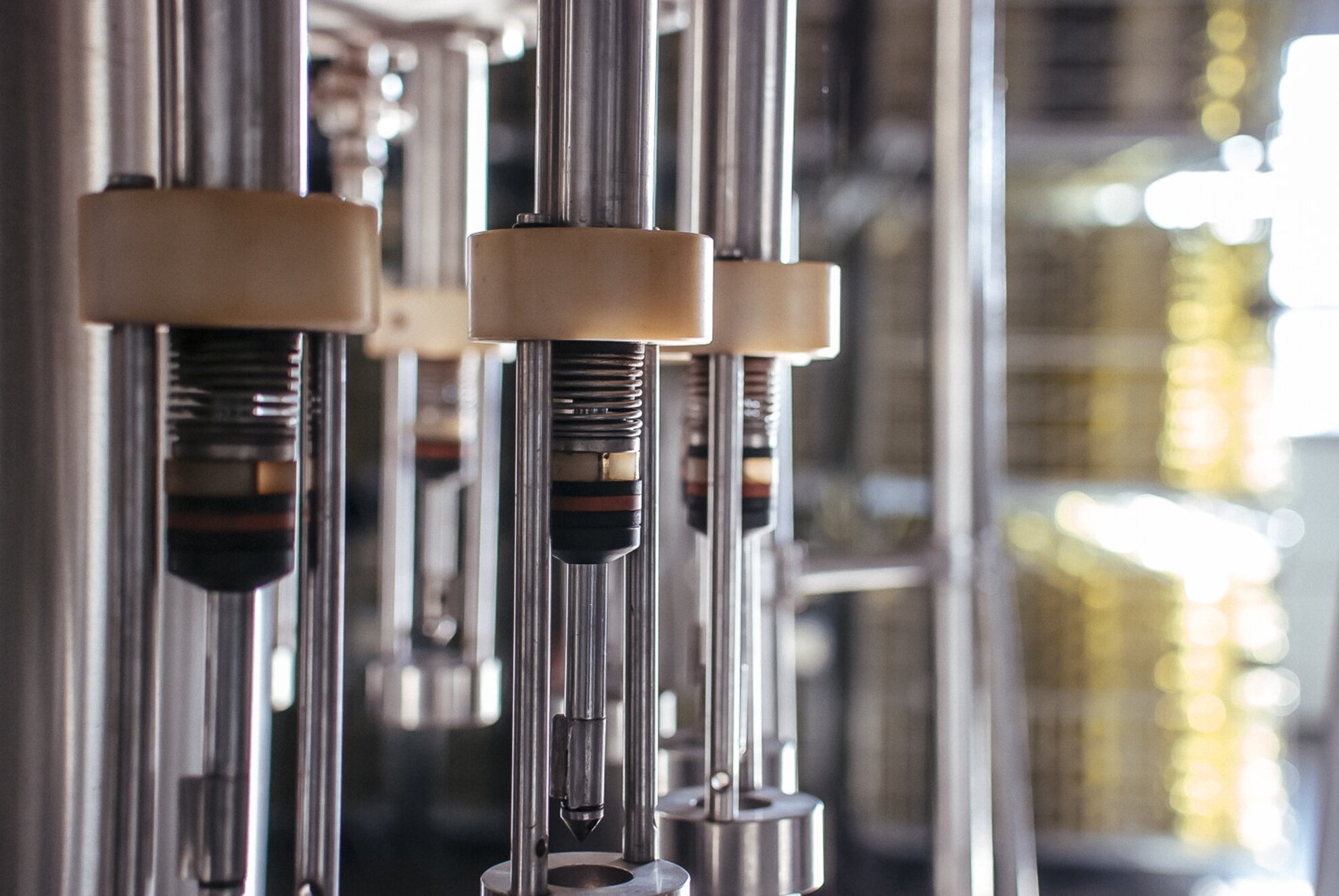
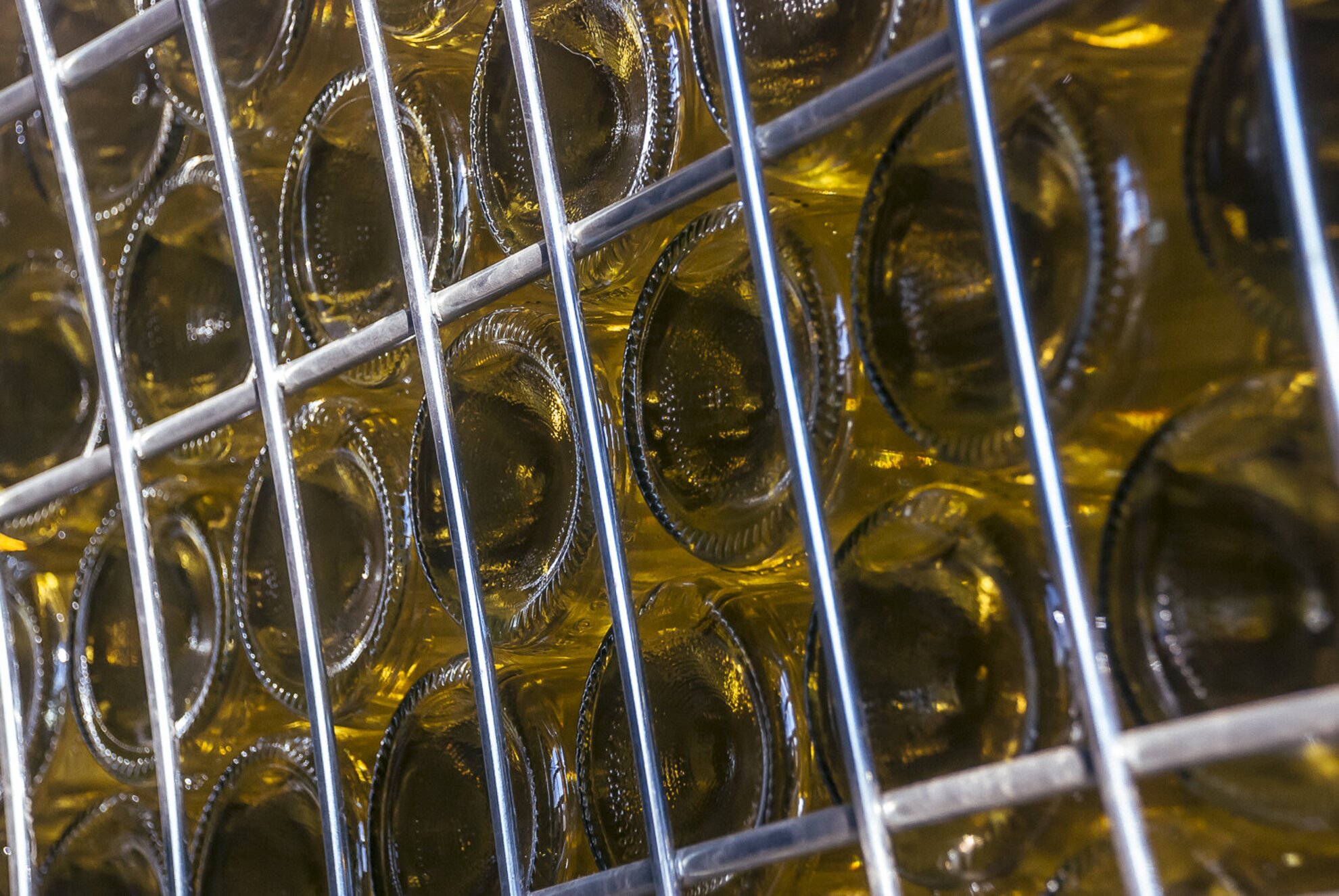
The processing and maturing of top wines is completely different: after the indispensable procedures, they spend several years in barrique barrels. The premium category wines are vintage-specific; they experiment with plantations on a small piece of land and - in case of a good year - they make 10-12 barrels altogether.
